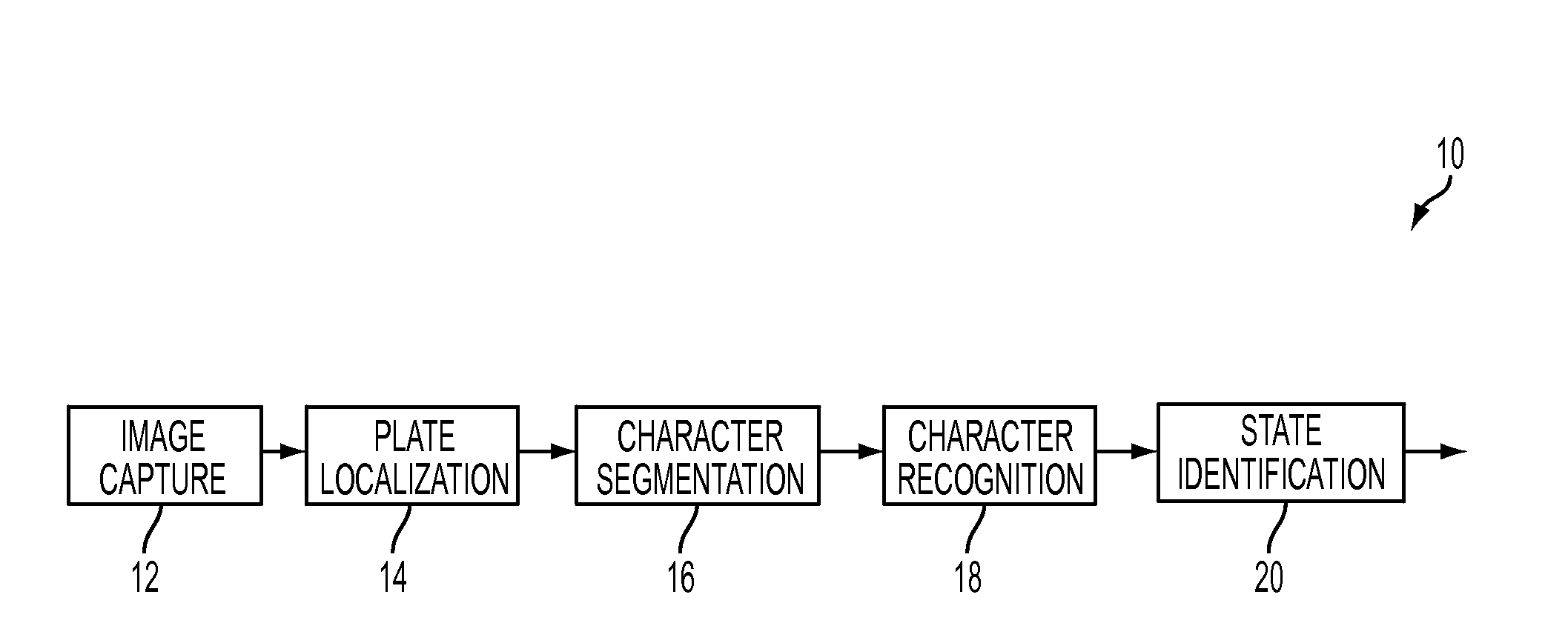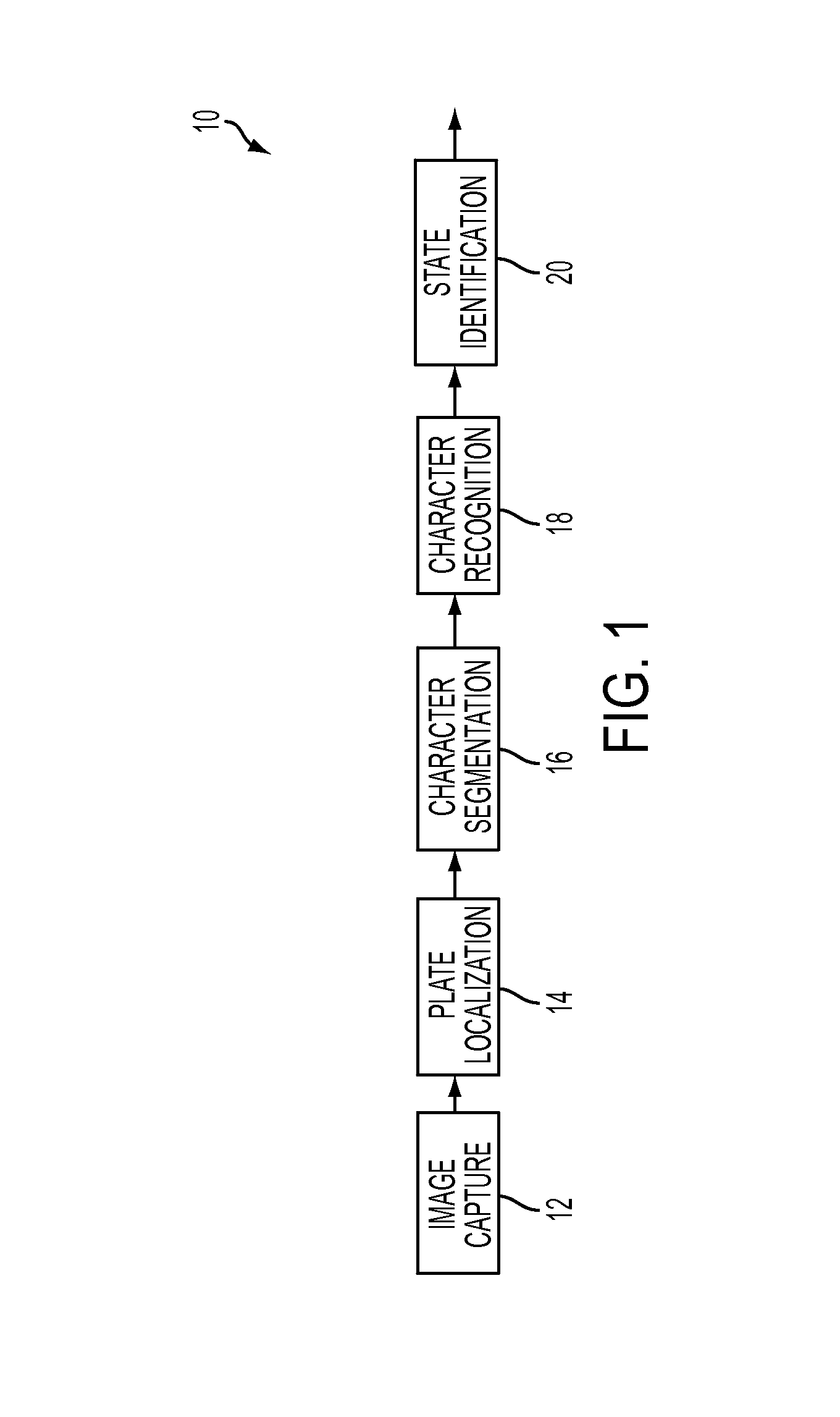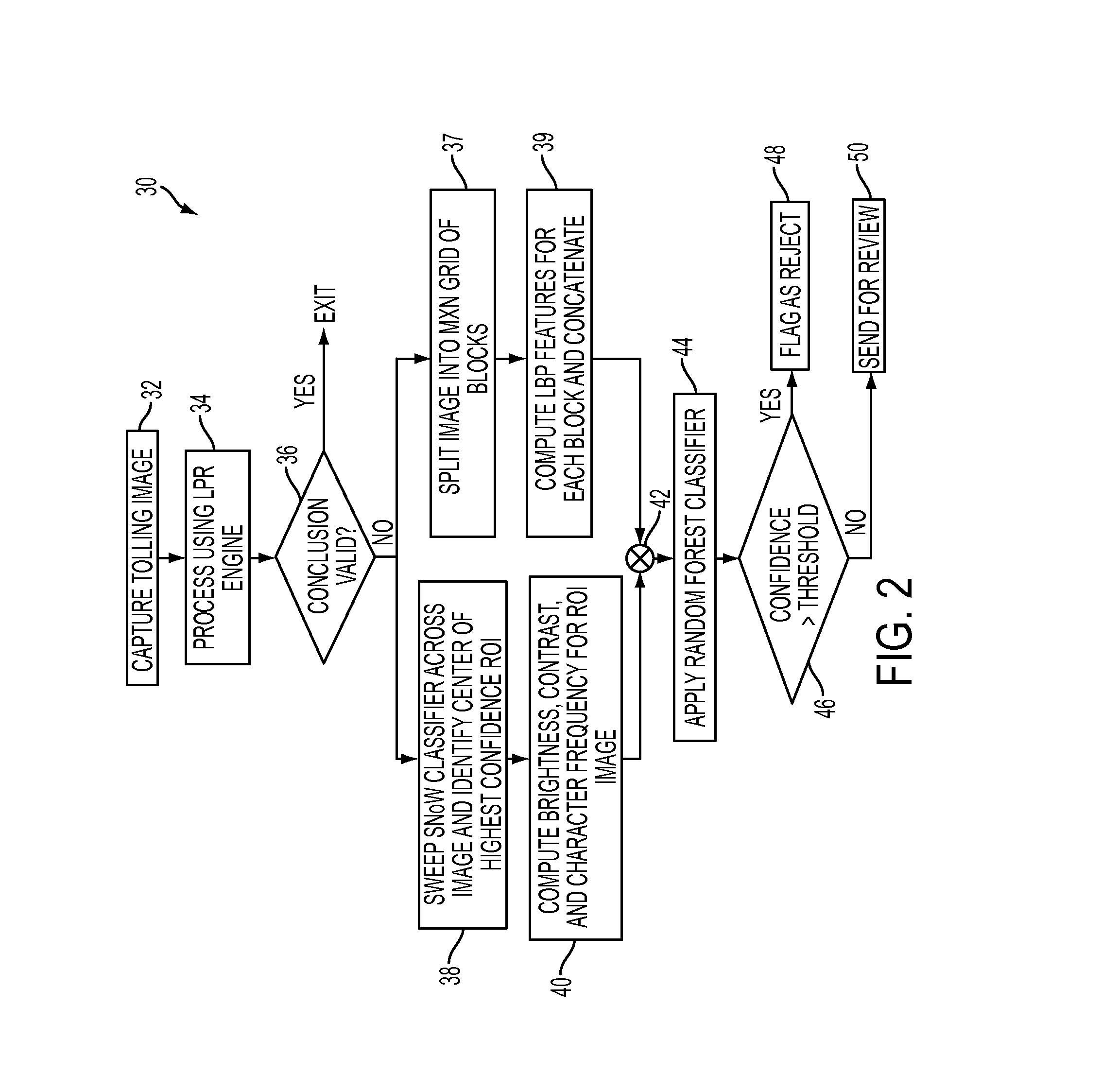Method and system for automating an image rejection process
a technology of automatic rejection and license plate, applied in the field of image processing, can solve the problems of lpr system or engine erroneous, license plate rejection, problematic or difficult to read license plates, etc., and achieve the effect of minimizing false positives, high accuracy, and high accuracy
- Summary
- Abstract
- Description
- Claims
- Application Information
AI Technical Summary
Benefits of technology
Problems solved by technology
Method used
Image
Examples
Embodiment Construction
[0033]The particular values and configurations discussed in these non-limiting examples can be varied and are cited merely to illustrate at least one embodiment and are not intended to limit the scope thereof.
[0034]FIG. 1 illustrates a block diagram depicting the basic architecture of an example LPR system 10, which can be adapted for use with one or more embodiments. System 10 includes a number of modules including, for example, an image capture module 12 for capturing an image of, for example, an automobile. Data from the image capture module 12 is input to a plate localization module 14, which in turn outputs data that is provided to a character segmentation module 16. Thereafter, a character recognition module 18 receives the character segmentation data from the character segmentation module 16 and performs a character recognition operation. Data from the character recognition module 18 is then provided as input to a state recognition module 20 to identifying the particular stat...
PUM
 Login to View More
Login to View More Abstract
Description
Claims
Application Information
 Login to View More
Login to View More - R&D
- Intellectual Property
- Life Sciences
- Materials
- Tech Scout
- Unparalleled Data Quality
- Higher Quality Content
- 60% Fewer Hallucinations
Browse by: Latest US Patents, China's latest patents, Technical Efficacy Thesaurus, Application Domain, Technology Topic, Popular Technical Reports.
© 2025 PatSnap. All rights reserved.Legal|Privacy policy|Modern Slavery Act Transparency Statement|Sitemap|About US| Contact US: help@patsnap.com



